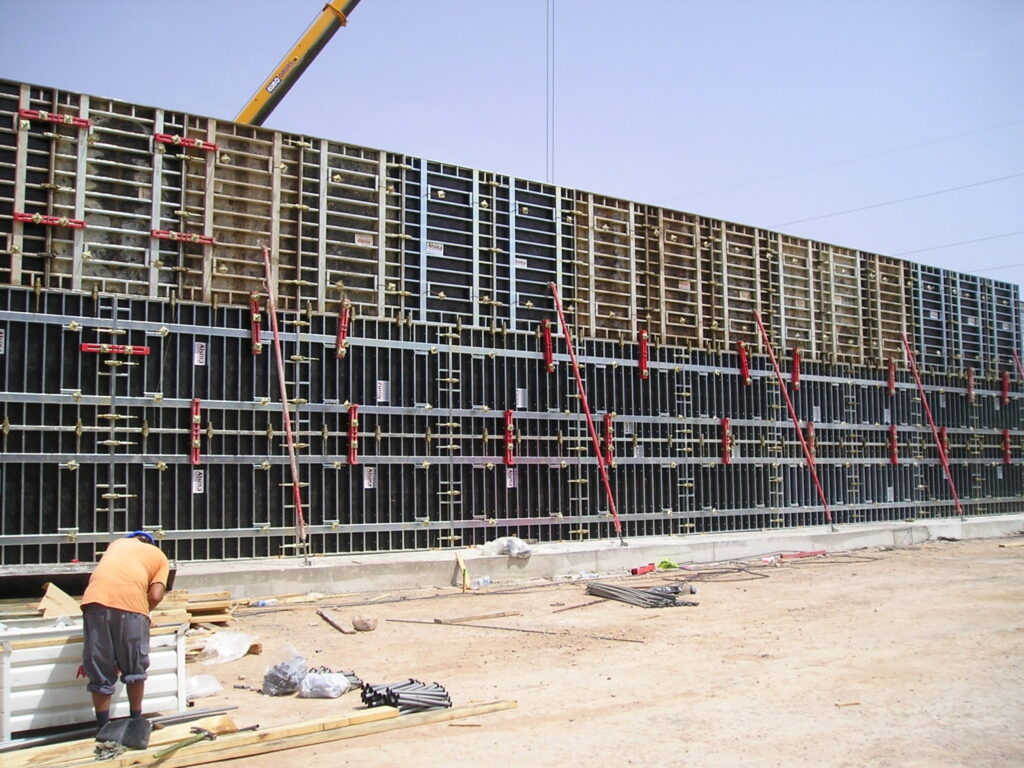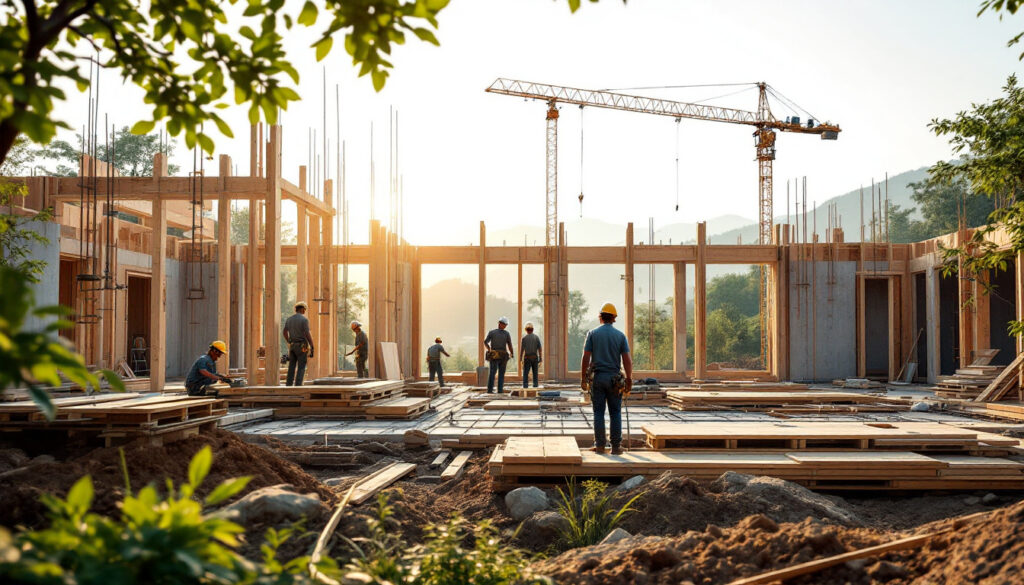In the ever-evolving world of construction, the materials and methods employed play a crucial role in determining the durability and efficiency of a project. Among the various innovations, Laminated Veneer Lumber (LVL) has emerged as a frontrunner in the realm of formwork. This article delves into the reasons why LVL construction is set to revolutionise the industry, offering a robust and sustainable alternative to traditional formwork materials.
The Advantages of LVL in Construction
LVL is engineered wood made from thin layers of veneer that are glued together, resulting in a material that boasts exceptional strength and stability. This section explores the myriad advantages of using LVL in construction projects.
In conclusion, LVL construction represents a significant advancement in the realm of durable formwork. Its strength, sustainability, and cost-effectiveness make it an attractive option for builders seeking to enhance the quality and efficiency of their projects. While challenges such as moisture sensitivity and fire resistance must be addressed, the future of LVL in construction looks promising.
1. Strength and Stability
One of the primary benefits of LVL is its impressive strength-to-weight ratio. Unlike traditional timber, LVL is designed to withstand significant loads, making it ideal for formwork applications. This strength ensures that the structure can support the weight of concrete during the pouring and curing process without warping or bending.
Moreover, the manufacturing process of LVL eliminates natural defects often found in solid timber, such as knots and splits. This results in a more uniform product that maintains its structural integrity over time, providing builders with peace of mind.
2. Sustainability
In an age where sustainability is paramount, LVL stands out as an environmentally friendly option. It is produced from fast-growing, renewable timber species, which helps to reduce the carbon footprint associated with construction. Furthermore, the efficient use of wood fibres in LVL manufacturing means that less timber is wasted compared to traditional lumber.
Many manufacturers of LVL also adhere to strict sustainability practices, ensuring that their products are sourced from responsibly managed forests. This commitment to sustainability not only benefits the environment but also enhances the reputation of builders who choose to utilise LVL in their projects.
3. Cost-Effectiveness
While the initial investment in LVL may be higher than that of conventional materials, the long-term savings are significant. The durability and strength of LVL reduce the likelihood of repairs and replacements, which can be costly and time-consuming. Additionally, the lightweight nature of LVL allows for easier handling and transportation, reducing labour costs on site.
Moreover, the speed of installation associated with LVL formwork can lead to shorter project timelines, further contributing to overall cost savings. In a competitive market, the ability to complete projects efficiently can provide a significant advantage.

Applications of LVL in Formwork
The versatility of LVL makes it suitable for a wide range of applications in construction. This section highlights some of the most common uses of LVL in formwork.
1. Concrete Formwork
Concrete formwork is perhaps the most prevalent application of LVL in the construction industry. Its strength allows it to support the weight of wet concrete, ensuring that the structure maintains its shape during the curing process. LVL formwork can be customised to fit various designs and specifications, making it a flexible choice for builders.
Additionally, the smooth surface of LVL reduces the risk of concrete adhesion, allowing for easier removal of the formwork once the concrete has set. This not only speeds up the construction process but also minimises damage to the finished surface. Find more about risk on https://research.uci.edu/human-research-protections/assessing-risks-and-benefits/
2. Temporary Structures
LVL is also an excellent choice for temporary structures, such as scaffolding and shoring. Its lightweight nature makes it easy to transport and assemble, while its strength ensures that it can support significant loads. This versatility allows builders to create safe working environments without the need for heavy, cumbersome materials.
Furthermore, the durability of LVL means that it can be reused multiple times for different projects, enhancing its cost-effectiveness and sustainability. This reusability is a significant advantage in an industry that often seeks to minimise waste.
3. Architectural Features
Beyond its structural applications, LVL is increasingly being used in architectural features such as beams, columns, and trusses. Its aesthetic appeal, combined with its strength, allows architects to create striking designs that are both functional and visually appealing.
Incorporating LVL into architectural elements can also contribute to the overall sustainability of a building. By using renewable materials, architects can design structures that align with modern environmental standards, appealing to a growing demographic of eco-conscious consumers.
Challenges and Considerations
While LVL offers numerous benefits, it is essential to consider some challenges associated with its use. Understanding these challenges can help builders make informed decisions when selecting materials for their projects.
1. Moisture Sensitivity
Although LVL is engineered for strength, it can be sensitive to moisture. If exposed to excessive water, LVL may swell or deform, compromising its structural integrity. Therefore, it is crucial to ensure that LVL is adequately protected during construction, especially in wet conditions.
To mitigate moisture-related issues, builders should consider using protective coatings or sealants that can enhance the water resistance of LVL. Additionally, proper storage and handling practices can further reduce the risk of moisture damage.
2. Fire Resistance
Another consideration when using LVL is its fire resistance. While LVL can be treated with fire-retardant chemicals, it is essential to understand the fire safety regulations applicable to a project. In some cases, additional measures may be required to meet local building codes.
Builders should work closely with fire safety experts to ensure that LVL is used appropriately in fire-sensitive applications. This collaboration can help to develop strategies that enhance the fire resistance of LVL structures, ensuring the safety of occupants and compliance with regulations.
3. Cost Variability
As with any construction material, the cost of LVL can vary based on factors such as supply, demand, and regional availability. Builders should conduct thorough market research to determine the most cost-effective options for their specific projects.
While LVL may present a higher upfront cost compared to traditional materials, its long-term benefits often outweigh the initial investment. A comprehensive cost analysis can help builders make informed decisions that align with their budgetary constraints.
The Future of LVL in Construction
As the construction industry continues to evolve, the demand for innovative materials like LVL is expected to grow. This section explores the future prospects of LVL in construction, highlighting trends and advancements that may shape its role in the industry.
1. Technological Advancements
Ongoing research and development in the field of engineered wood products are likely to enhance the properties of LVL even further. Innovations in manufacturing techniques and treatments could lead to improved moisture resistance, fire performance, and overall durability. Click here to find more about moisture.
Additionally, advancements in design software and modelling tools may enable architects and builders to utilise LVL in increasingly complex and creative ways. This could open up new possibilities for architectural design, pushing the boundaries of what is achievable with engineered wood.
2. Growing Environmental Awareness
As environmental concerns continue to rise, the construction industry is under increasing pressure to adopt sustainable practices. LVL’s eco-friendly attributes position it well to meet this demand, making it an attractive option for builders looking to enhance their sustainability credentials.
Furthermore, as consumers become more environmentally conscious, the preference for sustainable materials is likely to drive the demand for LVL. Builders who embrace this trend will not only contribute to a healthier planet but also appeal to a growing market of eco-aware clients.
3. Regulatory Changes
As building codes and regulations evolve to prioritise sustainability and safety, LVL may become a more prominent choice in construction. Regulatory bodies are increasingly recognising the benefits of engineered wood products, leading to potential incentives for builders who choose sustainable materials.
Staying abreast of regulatory changes will be crucial for builders looking to leverage LVL in their projects. By aligning with evolving standards, builders can ensure compliance while also benefiting from the advantages that LVL offers.
Conclusion

As the industry continues to embrace innovative materials and sustainable practices, LVL is poised to play a pivotal role in shaping the future of construction. By investing in LVL, builders not only contribute to a more sustainable future but also position themselves at the forefront of a rapidly evolving industry.
Read more at: What to Know Before You Buy an LVL Beam for Your Project

